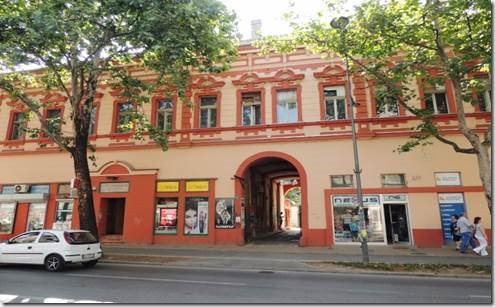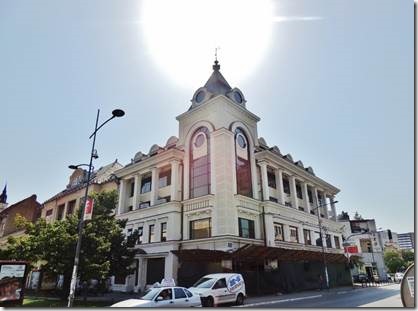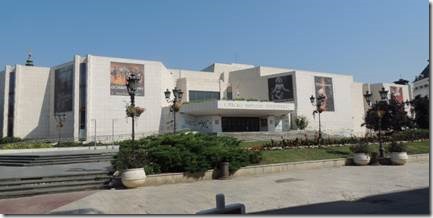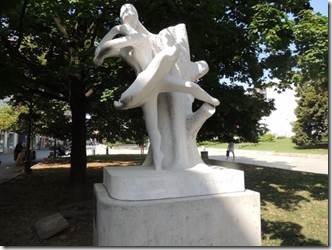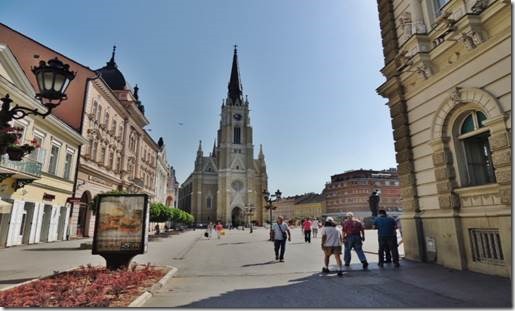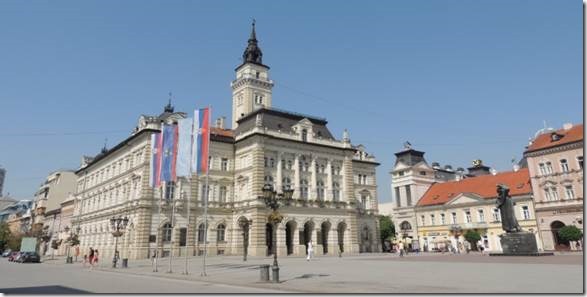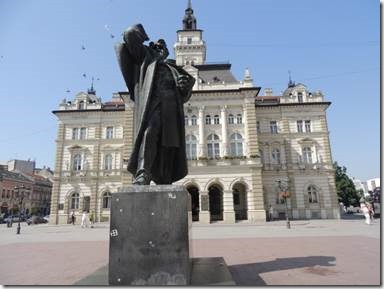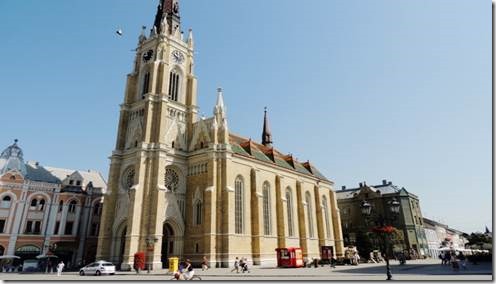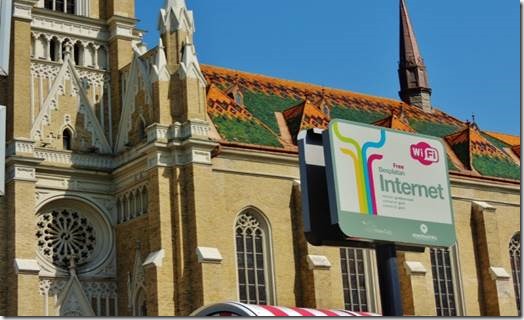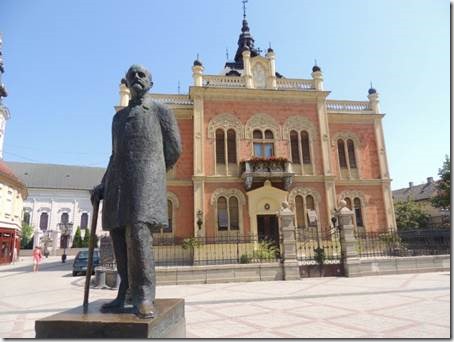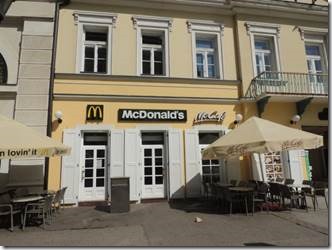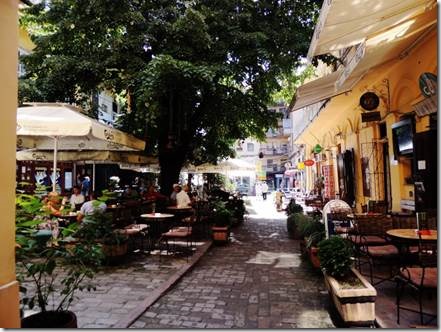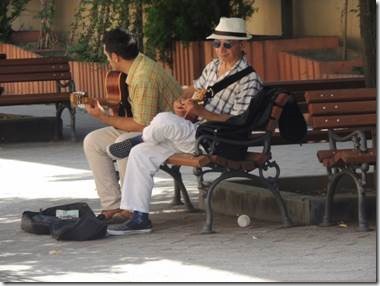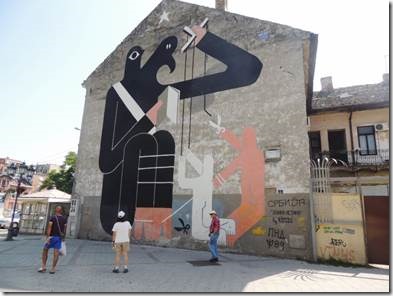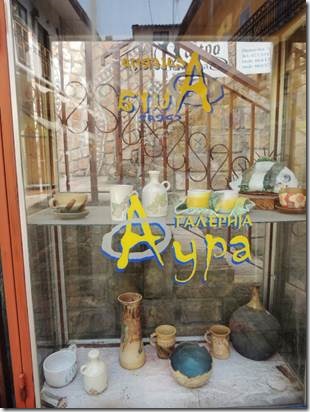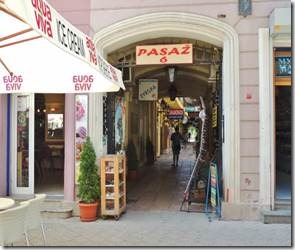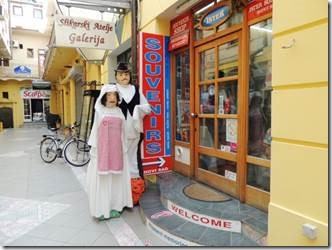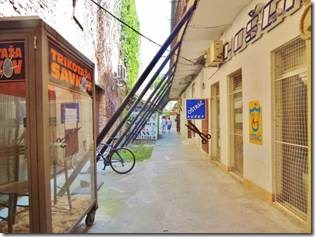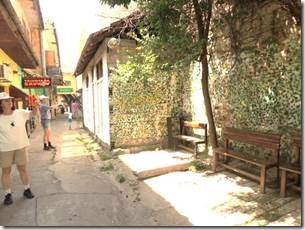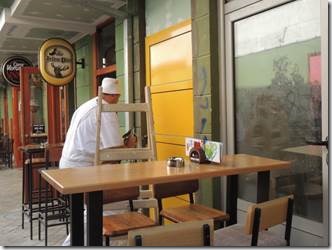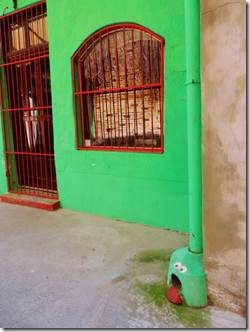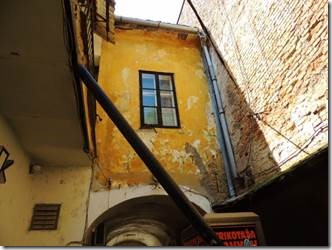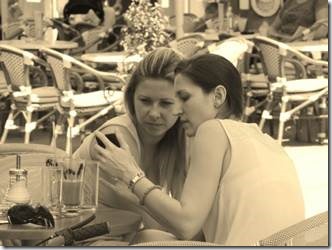Vidin, Bulgaria
Ru
Novi Sad 2
http://www.turizamns.rs/en/node/971 The old heart of the city
“The old heart of the Serbian Athens – as Novi Sad was once called because of its significant role in preserving Serbian culture – contains traces of the architectural styles of bygone times and evokes the charm of the past. Styles which can be seen in the architecture of the old heart of the city include, among many others, Classicism, Baroque, Secession and the national style, all of which merge well together, complement one another and tell the unique story of the history and development of Novi Sad over the past centuries. There are also examples of modern architecture in the old heart of the city which blend in well with the overall ambience. Besides a great many secular buildings, there are also monumental examples of religious architecture of the different faiths. The old heart of the city gained its current layout during a period of renovation in the second half of the 19th century following the revolution.
Every building in the old heart of the city is a real treasure. Each has its own story to tell and burden to unload, making it a hard task to include them all, let alone to single out some over others. Therefore not every building will be described in this guide – instead a selection of buildings has been made, with no intention of undermining the significance of those which have not been included.”
Unfortunately the info we got from the tourist office didn’t include a walking tour map so we only saw the buildings in the center. But it was really hot so that limited the amount of exploring anyone wanted to do.
|
Colorful! A sun halo “The Serbian National Theatre is located on Theatre Square. The current appearance of the theatre dates from 1981 and its featureless flat surfaces are what makes the building stand out. The façade is smooth and finished in white marble. Despite the building’s appearance, the Serbian National Theatre is the oldest professional theatre in Serbia, having been founded in 1861, and assumes a special place on the city’s cultural scene. “ |
|
“Your tour of the city should certainly begin at Liberty Square (Trg Slobode). It is the main city square and the venue for all that happens in Novi Sad, from ringing in the New Year to celebrations and concerts, and a great many other important and not-so-important events. It is here that the city administration, money, trade, the church, the cafés and restaurants and the local pigeons lend their rhythm to the city. Liberty Square is framed by beautiful buildings, such as the Magistrate (City Hall), Finance House (the Vojvođanska Bank building), the Roman Catholic Name of Mary Church, Tanurdžić’s Palace and the Vojvodina Hotel to name but a few.” |
|
“City Hall, the former Magistrate, dominates the square with its elegancy and beauty. The building, which dates from 1895 and is the work of architect György Molnár, is the administrative seat of the Novi Sad municipality. It was built in Neo-Renaissance style, with 16 allegorical figures, the work of Julije Anika, and the city’s coat of arms as decoration. The tall tower with the bell of St Florian, a Catholic saint and protector of the city from fire, is especially striking on City Hall. The bell is also known as Matilda’s Bell, after the philanthropist who presented the bell to the fire-fighters of Novi Sad. “ “A statue of Svetozar Miletić (1826–1901), former mayor of Novi Sad, politician, journalist and lawyer, stands in the middle of the square. The base is made of grey marble, while the 5-metre tall statue, a 1939 work of Ivan Meštrović, is cast in bronze.” “It was positioned twice to the same place. For the first time 1939th year, during World War II when the occupier had intended to remove the monument, but it was hidden by the citizens. After the liberation at 1944, the monument was returned to its original position.” http://www.visitnovisad.rs/Novi_Sad-guide.html “Opposite City Hall stands a parish church, called the Name of Mary Church. It was built in 1895, at the same time as the Magistrate (City Hall) and was designed by the same architect, György Molnár. The church was erected in Neo-Gothic style on the site of an earlier church built in 1742 and is dedicated to the Holy Mother of God. Inside there is an altar made from carved wood, while the windows are made of Tyrolean stained glass. Despite the inaccuracy of the term (since the seat of the Bačka diocese in located in Subotica), the residents of Novi Sad refer to the church as the Cathedral. The Yard of the Catholic Church (Katolička Porta), with the church parish building – the Plebanija, from 1809 – as well as the Vatican Palace and City Cultural Centre, occupies the space behind the parish church. The Vatican Palace was built in 1930 from plans drawn up by architect Daka Popović. The façade was built in Secession style and has many terraces and balconies like those on residential housing blocks from the pre-First World War period.” And Roanoke Virginia is debating about WiFi |
|
“At the beginning of Zmaj Jovina street stands the Bishop’s Palace, the residence of the Serbian Orthodox Bishop of the Eparchy of Bačka. The residence was finished in 1901 according to plans drawn up by architect Vladimir Nikolić, who is also responsible for the contemporary look of many buildings in the centre of Sremski Karlovci.The building’s façade is a mix of several styles among which Serbo-Byzantine Romanticism and Secession are dominant. The façade is also notable for the red brick it is built from, with yellow bricks and beautiful coats of arms of the rich Eparchy of Bačka added for decoration. Besides this, the building also houses a chapel which was painted by Russian painter Andrey Avsenev.” “At the end of the street, in front of the bishop’s house, since 1984, there is a monument of Jovan Jovanovic Zmaj, the most famous children’s poet, after which street bears its name. The bronze figure is 230 centimeters high and it is placed on the granite pedestal.” http://www.visitnovisad.rs/Novi_Sad-guide.html |
|
Everywhere |
|
We skipped the McCafe and had iced coffee here. Not the best we’ve had but okay. Israeli ice coffee still wins the prize. “Right by the Bishop’s Residence there is the entrance to Dunavska street. Dunavska street picturesquely depicts both modern life and times gone by in Novi Sad. The overall atmosphere preserved by the street makes it a favourite place of Novi Sad’s residents for strolling, shopping or sitting in cafés and restaurants. “ |
|
Randal dropped some euros into their case. |
|
Street art Cutting the strings of some form of hated control, but I not sure whom or what it’s really aimed at. |
|
Ceramic art. I really liked the blue bowl with the ragged edges. |
|
Arches led to passages lined with small shops or cafes. This was Pasaz 6 |
|
This was a pasaz in progress. |
|
Friends at a café. What’s the opposite of a selfie; because I guess that’s what this is. |

